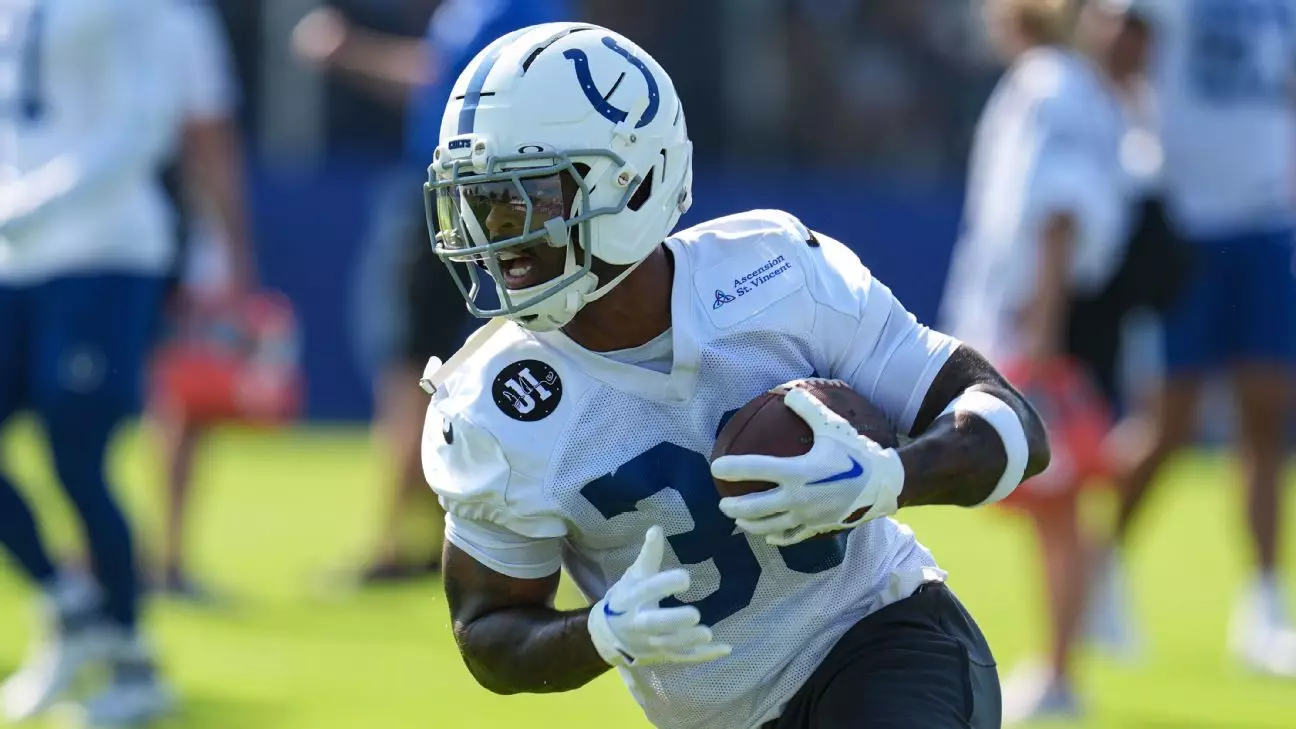In the high-stakes world of professional football, the pursuit of toughness often masks a dangerous negligence toward player safety. The recent injury to Salvon Ahmed during Indianapolis Colts training camp exemplifies this perilous mentality. While teams tout the importance of preparing players for the brutal reality of games, they sometimes push the boundaries—blurring the line between rigorous training and careless risk management. The tragic incident reveals an unsettling truth: the relentless quest for grit can come with irreversible consequences, especially when safety protocols are overlooked or misunderstood.
The core issue lies in the stance teams take toward “live” tackling sessions. Coaches like Shane Steichen argue that such sessions forge resilience and mental fortitude, but at what cost? The injury inflicted by an illegal hip-drop tackle, a maneuver banned last season due to its propensity for causing severe lower-body trauma, underscores the perils of prioritizing physical toughness over player well-being. Player safety should never be sacrificed in the name of development or competitive edge. Instead, it should be embedded into the very fabric of training programs—an unwavering standard rather than an afterthought.
The Dangerous Myth of ‘Creating an Edge’
The logic driving more intense live drills aims to imbue teams with a competitive edge, reinforcing the misconception that physical hardship equates to superior readiness. Yet, this outdated philosophy neglects the scientific reality: football’s violent nature already places players at substantial risk. Amplifying contact through aggressive practice methods only elevates the likelihood of catastrophic injuries, without guaranteeing improved performance.
The fact that Ahmed’s injury occurred during a development period—when the focus should be on honing skills with protective measures—raises serious questions. Steichen’s assertion that “training camp is where you want to create the edge and toughness” appears to ignore the fact that overexposure to dangerous tackles can erode the very integrity of player longevity. Football’s brutality should be managed, not glorified. A culture that valorizes suffering as a measure of resilience fosters tragic outcomes like Ahmed’s injury.
By insisting that backups learn to tackle under risky conditions, teams may unintentionally normalize unsafe techniques. Noble as the intent might be—to cultivate a winning mentality—such strategies often overlook the long-term health implications for athletes. In reality, toughness should be measured not solely by how much pain players can endure but by how well they are protected and empowered to succeed without risking permanent harm.
The Center-Left Perspective: Striking a Balance Between Tradition and Innovation
From a centrist, center-left perspective, it’s clear that the legal and ethical boundaries of sports safety need to be re-evaluated. Emphasizing player health doesn’t mean undermining the spirit of competition; it signifies fostering an environment where development and safety coexist. The NFL’s ongoing debates on tackling techniques should serve as a catalyst for broader reform—shifting focus from outdated notions of machismo to evidence-based standards that prioritize long-term wellbeing.
The incident with Ahmed should be a wake-up call for league administrators, coaches, and teams. It’s imperative to question whether the current model, which often tolerates or even encourages aggressive tackling in practice, aligns with the fundamental responsibility to protect athletes. Safety protocols must be enforced strictly, with respect for their intent and the recognition that some techniques—like hip-drop tackles—pose unacceptable risks.
Furthermore, embracing innovation in training—such as improved concussion protocols, better protective gear, and alternative practice drills—can help preserve the sport’s physicality while mitigating unnecessary harm. The NFL’s challenge is to strike a balance: uphold the competitive spirit without risking the health of its players in pursuit of an illusory edge. Player safety initiatives should not be viewed as constraints but as essential investments in the future integrity of the sport.
The tragic injury of Salvon Ahmed underscores a profound need to reevaluate how football is practiced at the highest levels. The allure of toughness must be tempered with responsibility, ensuring that the game remains competitive but also humane. Protecting players isn’t a sign of weakness; it is a mark of a mature organization willing to adapt to the realities of modern sports medicine and ethical standards. Only through this honest introspection can football evolve into a safer, more sustainable sport—one that respects its athletes just as much as it celebrates their grit.


Leave a Reply